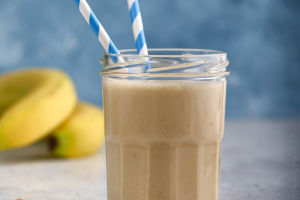People who regularly drink honey may sometimes notice that it suddenly becomes cloudy, changes from a dark to a lighter color, and eventually solidifies.
This phenomenon is called honey crystallization. It happens because the sugar in honey has high solubility.
Crystallization is a natural state of honey and does not affect its nutrients, only its appearance. There are special ways to prevent honey crystallization.
Honey crystallization is mainly due to the high solubility of sugar in honey. The sugars in honey are mainly glucose, fructose, and sucrose.
Sucrose has the lowest solubility, fructose has the second highest solubility, and glucose has the highest solubility. Honey crystallization happens when glucose separates from honey after precipitation.
Crystallization does not affect the nutrients in honey. Honey can crystallize in different forms, such as greasy, fine-grained, or coarse-grained crystals. If there are many dense crystalline nuclei, the process of forming crystals quickly unfolds across the board, forming a greasy shape.
If there are slightly fewer crystalline nuclei, the crystallization is fast and forms fine-grained crystals. If there are few crystalline nuclei and the crystallization is slow, each nucleus has enough glucose molecules to make up its composition and form coarse granular, or lumpy crystals.
Different varieties of honey can crystallize in different forms, but this will not affect its nutrients because the nutrients in honey are dissolved in water and will not change because of crystallization.
The type of honey plant also affects whether honey will crystallize or not. Honey with high glucose content, such as rape honey, linden honey, and thorn honey, is more likely to crystallize.
Honey with more fructose, such as acacia honey and jujube honey, is less likely to crystallize.
Honey crystallizes most easily at 13-14℃. If the temperature is lower than this, the degree of supersaturation of glucose increases but the viscosity and density of fructose, maltose, dextrin, and colloidal substances in honey also increase greatly at low temperatures.
This reduces and hinders the movement and diffusion of crystalline nuclei and delays crystallization. If the temperature is higher than this, the viscosity of honey is reduced but the solubility of glucose is increased.
This reduces the degree of supersaturation of the solution and makes crystallization slower or even melts it.
To prevent honey crystallization, you can put the honey in the refrigerator to lower its temperature and reduce the solubility of sugar in the honey. Besides, you can also put the honey in heated water to melt the crystallized honey but don’t heat it too much to avoid destroying its nutrients.
You can also prevent honey crystallization by adding wetting agents such as lemon juice or orange juice. These wetting agents can reduce the solubility of sugar in the honey and prevent it from crystallizing.


